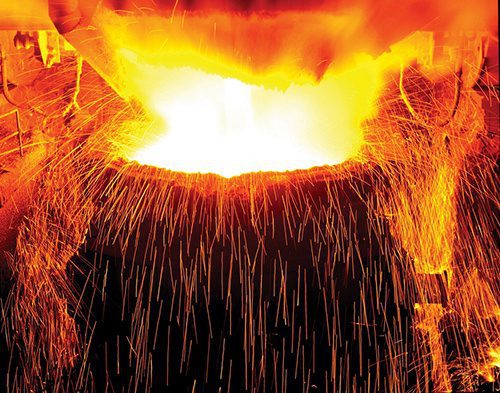Breaking Down Thousands of Steel Grades Into Four Common Types
 In the world of steel manufacturing and fabrication, options for steel selection are vast. All steel is composed of iron and core. Additional amounts of carbon and alloying elements create such a wide variety of steel options. According to the World Steel Association, there are more than 3,500 different grades of steel. The possibilities and uses for steel are essentially endless.
In the world of steel manufacturing and fabrication, options for steel selection are vast. All steel is composed of iron and core. Additional amounts of carbon and alloying elements create such a wide variety of steel options. According to the World Steel Association, there are more than 3,500 different grades of steel. The possibilities and uses for steel are essentially endless.
The strength and durability of steel is determined by the additional elements that are included in its formulation. Elements such as phosphorus, manganese, or sulphur can affect the strength of the metal. These different elements are added into the formulation according to the characteristics necessary for each application. Grading systems have been created to describe these individual combinations. The key to exceptional steel quality is to be sure that the proper steel grade and type is being used for the correct job.
With more than 3,500 different grades of steel available, the metal alloy has been divided into four main types, each created for specific applications.
Breaking Down the Four Main Types of Steel
- Stainless Steels – Perhaps the most well known type of steel, stainless steel alloys typically contain about 10-20% chromium as the primary alloying element. This combination makes the stainless steel highly resistant to corrosion and can be easily molded, rolled, and shaped for hundreds of applications. Stainless steels are used for medical and surgical equipment, household appliances, silverware, and even exterior cladding for industrial and commercial buildings. It’s thin, flexible nature makes it a great choice for countless applications.
- Carbon Steels – Carbon steels were given this name due to fact that they contain very small amounts of other alloying elements. They are extremely strong and are commonly used to make knives, swords, springs, high-tension wires, automotive components and other similar products. Today, carbon steels make up for nearly 90% of all steel production.
- Alloy Steels – Alloy steels contain a combination of the standard steel components, carbon and iron, along with a wide range of other elements like manganese, silicon, nickel, or copper. These alloy combinations make the steel exceptionally hard, tough, wear resistant, and resistant to corrosion after being treated by heat. Alloy steels are most notably used for the construction of ship hulls, submarines, bridges and military vehicles.
- Tool Steels – Tool steels are steel alloys that contain tungsten, molybdenum, cobalt and vanadium. The various elemental combinations increase the steel’s heat resistance and durability, making this type of steel perfect for constructing cutting and drilling equipment.
Do you have questions regarding which type of steel is the best choice for your upcoming project? With an extensive amount of grades and types to choose from, it would take an expert to know the difference between them all. We have good news for you! With a reputation longer than 60 years, the steel fabrication professionals at Swanton Welding can walk you through the process and create the steel products you’re looking for with precision from start to finish. Contact us today to learn more!

